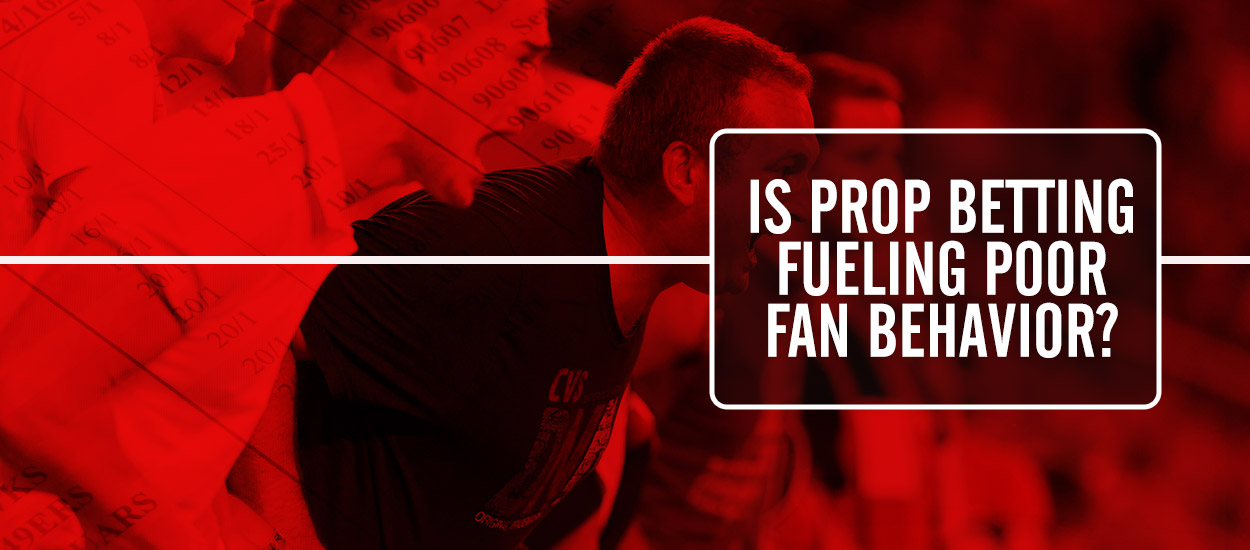Santa Anita Park will reopen on March 29th after the Stronach Group, which owns the track, came to an agreement with the California Horse Racing Board that will allow horses that are currently running on Lasix to continue doing so on race day. But, it will prohibit foals that were born after 2017 from using it and the maximum dosage of Lasix was cut in half. Originally Belinda Stronach, the CEO of the Stronach Group, provided the following press release after the closure of the race track on March 6th, after the 21st horse died at the track in the current meet. The full release can be read here.
“Today, I’m announcing The Stronach Group will take the unprecedented step of declaring a zero tolerance for race day medication at Santa Anita Park and Golden Gate Fields. These Thoroughbred racetracks will be the first in North America to follow the strict International Federation of Horseracing Authorities (IFHA) standards.
This mandate encompasses a complete revision of the current medication policy to improve the safety of our equine and human athletes and to raise the integrity of our sport.
These revisions comprise best practices currently employed at racetracks around the world:
- Banning the use of Lasix.
- Increasing the ban on legal therapeutic NSAIDS, joint injections, shockwave therapy, and anabolic steroids.
- Complete transparency of all veterinary records.
- Significantly increasing out-of-competition testing.
- Increasing the time required for horses to be on-site prior to a race.
- A substantial investment by The Stronach Group in diagnostic equipment to aid in the early detection of pre-existing conditions.
- Horses in training are only allowed therapeutic medication with a qualified veterinary diagnosis.
Additionally, it is time to address the growing concern about use of the riding crop. A cushion crop should only be used as a corrective safety measure. While we firmly believe our jockeys have not purposely been mistreating their mounts, it is time to make this change.
These modernizations are in addition to the previously announced commitment to the continued engagement of outside experts to regularly review our dirt, turf and synthetic courses for consistency, composition and compaction to create the safest racing surfaces in the world.” The release clearly seems to put most of the blame for the breakdowns on drugs and most in other countries would agree. In Europe, Australia, South America, Africa and Asia the use of drugs on horses is banned and the percentage of breakdowns in the rest of the world is far lower than in North America. In fact, most catastrophic injuries in Europe are from steeplechase and hurdle races and are caused when a horse falls and either lands badly or is stepped on by another horse. For that reason, there has long been a call to end jumping races around the world and most non-European jurisdictions have banned it, but that’s a topic for another day.
The release clearly seems to put most of the blame for the breakdowns on drugs and most in other countries would agree. In Europe, Australia, South America, Africa and Asia the use of drugs on horses is banned and the percentage of breakdowns in the rest of the world is far lower than in North America. In fact, most catastrophic injuries in Europe are from steeplechase and hurdle races and are caused when a horse falls and either lands badly or is stepped on by another horse. For that reason, there has long been a call to end jumping races around the world and most non-European jurisdictions have banned it, but that’s a topic for another day.
I spoke to a trainer based in Ireland who agreed that the use of drugs on race days is a concern:
"Horses can’t speak our language, so they aren’t able to tell us if they aren’t feeling well on race days but their actions in the paddock, in the post parade and in the warmups informs us of any concerns. The problem with drugs is that they mask these injuries and ailments. Think of it in a human perspective. If someone is feeling a lot of pain in their ankle or knee they generally will rest and put their leg up and any activity they planned would be put off. But if that same person took strong pain relievers, they will start feeling better and act normally and may perform their usual activities, but the danger is still there because while the pain is gone, the injury still exists. It’s why the Olympics will not allow athletes to use drugs for a period prior to the race and why so many athletes that run in spite of injury end up with broken limbs saying after 'I thought I was ok.' But unlike a human, if a horse breaks a limb it can’t lie in a bed with a cast or use a walking stick and it certainly can’t use a wheelchair. And over here if a horse really acts up before a race it is usually not feeling well and will simply be withdrawn, whereas in the U.S. they always seem to find a way for a horse to race regardless. The common practice there of a vet lifting a horse’s leg and saying it’s good is ridiculous – that’s not an exam. So even if it was ever allowed in Ireland, I would never use any drugs on my horses, including Lasix, since that drug can mask other injuries plus a nose bleed in a horse can be quite severe. Horses do indeed bleed but Lasix on race day isn’t the answer."
But other horsemen feel differently. They believe the use of Lasix as a preventative measure is good for horses and is necessary for horsemen to keep the animals under control. The CEO of the New York Horse Racing board said the following in 2004 when there were calls a few years back to ban the drug on race day:
"The vast majority of horses bleed and Lasix is the safest and most effective treatment we have available to treat this condition."
And most horsemen concurred, which is why today only about 4% of horses in North America aren’t given Lasix and why so many trainers and jockeys said they would consider moving from California if the state does indeed ban the use of race day Lasix, since in their view, they couldn’t do their jobs without it. The use of pain relievers and steroids is a different matter and has received mixed comments, although almost all horsemen are willing to phase them out if it applies to everyone.
But the trainer in Ireland completely disagreed.
"If horse safety is your priority then ban all race day drugs. Unfortunately, in the U.S. it’s all about money and the tracks want to see full race cards even if that means forcing horses to run even when they aren’t 100 percent. We have no problem with 3 or 4 horse races here, but tracks there (in the U.S.) won’t allow races with fewer than 5 horses. I guess it’s a money thing for exotics betting. There’s also far too many race tracks in the United States in my humble opinion."
That said, others I have spoken to said the Lasix controversy is a red herring for the two causes that really account for the majority of breakdowns and those factors are heavy schedules for horses and dangerous race surfaces. The workout and race schedule issue has been controversial for some time and many horsemen from outside North America are shocked how often horses get worked out prior to a race. In Europe, for example, it’s not unusual to see horses go to the gate for the first time with only 1 or 2 workouts whereas in North America it’s commonplace to see a horse work out 4 or 5 times in a 2-week span before a race. The workouts are generally intense, whether a horse is listed as running handily or breezing, and a lot of vets believe too many workouts in a short period can lead to bleeding and puts strain on a horse’s legs. Most vets believe a horse only needs a couple of good workouts before racing just so they can be used to the track, but most trainers still believe that practice makes perfect and that horses have to be worked out in order to compete. One trainer based at Woodbine Racetrack in Toronto I spoke to a couple of years back said that trainers have to work the horses regularly just to get them competitive.
"I don’t train natural born athletes like Secretariat or Affirmed, so I have to mold a horse into shape. I must get it used to the surface, to learn how to run against other horses and learn when to run and when to relax, as well as just getting it comfortable in surroundings with people and other horses and jockeys. These workouts are paramount and without it I not only believe trainers would have uncompetitive horses, but the horses would also be a danger to other horses on the track since they wouldn’t know what to do. To me that’s what causes the disastrous results – horses that are not trained properly. And practice makes perfect. Usain Bolt didn’t become the greatest sprinter in the world by sitting on his ass and only running on race day. He puts in hundreds of hours before every race. Without training he would become… well he would become me."
The trainer did acknowledge that intense training, along with racing, does cause some stress on the horse and that’s when a good trainer will know when to slow down the schedule. But in his view, workouts in days before races is very important. He also was clear that if people believe trainers don’t care about the horse’s welfare, they are simply wrong.
But vets disagree and many say that if horse safety is truly the ultimate goal of the industry, then trainers need to limit the amount of running a horse does and truly give it time to heal from any stress it received in it's latest races and workouts. One vet from Woodbine even pointed to a champion sprinter he followed that ran at Woodbine in the early 1980s and was last seen racing at 9 years old at Fort Erie in a $3,000 claimer. He said the horse had nothing left and the only question was whether it would even survive another race. Eventually the horse’s original owner was informed about what was happening from a friend who was at the Fort Erie racetrack, just outside Buffalo, and he bought the horse prior to the race, scratched it from that race and simply retired it from racing. From that day until the horse died of old age a few years back, it galloped happily on the owner’s farm and lived a peaceful life, thanks to finally giving it rest along with thousands of dollars in therapy to alleviate the ailments the horse had from intensive workouts and racing over seven years.
But the one issue that everyone seems to agree is the most important for horse racing safety is track surface.  Until the mid-2000s races were always ridden on dirt or turf courses, but after the tragic death of Barbaro and Eight Belles, which led to a big decrease in horse racing viewing and attendance, tracks looked for other alternatives. Turfway Park decided to install Polytrack in 2005, a synthetic surface made up of sand, rubber and synthetic fibers with a wax coating which was deemed to be softer and safer than dirt courses. Other forms of synthetic tracks were developed as well including Pro-Ride and Tapeta and several racetracks switched to it. Keeneland racetrack in Kentucky, Woodbine in Toronto and several other tracks made the move and in 2006 California mandated that all racetracks had to be made of synthetic surfaces. And in Europe, several tracks like Kempton Park, Lingfield Park, Dundalk Park and Southwell offered synthetic surfaces to complement its turf courses and in Australia a few tracks, including Geelong, went that route as well. And the results were evident. In California horse deaths decreased from 3.09 to 1.87 per 1,000 races, at Keeneland and Turfway they declined at an even greater rate and at Woodbine the deaths were almost unheard of. In fact, there were more horse fatalities on Woodbine’s turf course (which has always been deemed safer than dirt) than on the polytrack. But these surfaces do not last forever and when they had to be replaced most of the racetracks, including Santa Anita and Del Mar decided to reinstate the dirt course with permission from the California Horse Racing Board and almost immediately the horse deaths at the tracks started to climb.
Until the mid-2000s races were always ridden on dirt or turf courses, but after the tragic death of Barbaro and Eight Belles, which led to a big decrease in horse racing viewing and attendance, tracks looked for other alternatives. Turfway Park decided to install Polytrack in 2005, a synthetic surface made up of sand, rubber and synthetic fibers with a wax coating which was deemed to be softer and safer than dirt courses. Other forms of synthetic tracks were developed as well including Pro-Ride and Tapeta and several racetracks switched to it. Keeneland racetrack in Kentucky, Woodbine in Toronto and several other tracks made the move and in 2006 California mandated that all racetracks had to be made of synthetic surfaces. And in Europe, several tracks like Kempton Park, Lingfield Park, Dundalk Park and Southwell offered synthetic surfaces to complement its turf courses and in Australia a few tracks, including Geelong, went that route as well. And the results were evident. In California horse deaths decreased from 3.09 to 1.87 per 1,000 races, at Keeneland and Turfway they declined at an even greater rate and at Woodbine the deaths were almost unheard of. In fact, there were more horse fatalities on Woodbine’s turf course (which has always been deemed safer than dirt) than on the polytrack. But these surfaces do not last forever and when they had to be replaced most of the racetracks, including Santa Anita and Del Mar decided to reinstate the dirt course with permission from the California Horse Racing Board and almost immediately the horse deaths at the tracks started to climb.
Ironically, the argument given for the change back to dirt was for safety, i.e. horses run at different tracks and it’s better for them to race on the same surface for safety reasons. But most horsemen acknowledged that was bunkum and the real reason for the switch back to dirt was the high cost of the synthetic tracks, plus the fact that many trainers and even horse handicappers hate those tracks. Horsemen have stated that synthetic and dirt tracks run differently and a horse who does well on synthetic may not do well on dirt and visa versa. Consequently, it’s tough to run horses at multiple tracks and expect good results on both. Also, the synthetic tracks always seem to have a bias for horses that come from behind and for outside stalls and horsemen detest when factors out of their control decide races. And horse handicappers hate having to handicap different surfaces because they find it difficult to handicap races where horses have some races on dirt and some on synthetic. Yet in the end money is the biggest factor, as one racetrack worker said to me:
"If the synthetic surface lasted for 30 years the cost could be justified but to replace them every 5 to 10 years is just not feasible. With dirt tracks you simply replace old dirt."
Keeneland followed California’s lead and other tracks have also indicated they will go back to dirt surfaces. Woodbine also considered switching surfaces when the Polytrack outlived its usefulness, but the track decided to simply switch to Tapeta – a different, albeit cheaper, synthetic track that is used in San Francisco.
The Stronach press release seems to indicate that the group is wondering whether it erred in not keeping the synthetic surface, although there is no indication at this time they will return to polytrack. But synthetic supporters I spoke to said that if horse safety is the real concern and not money then the industry will force all tracks to install them. And in Europe and Australia the law states that only synthetic or turf surfaces will be permitted.
Recent times have been both sad and rough for horse racing in North America. Every time there is a positive event like the Triple Crown wins by Justify and American Pharaoh that moves horse racing one step forward, there are tragic events like the deaths at Santa Anita that takes it two steps back and convinces millennials and young people why they don’t want to fully engage in the sport.
Now horse racing is at a real crossroads. Obviously, nothing will ever ensure that horses never die on the track, any more than it’s impossible to ensure that baseball players won’t break a leg running after a ball, but the industry must decide what is really their biggest objective - money or safety. Like it or not, it appears that it’s not possible to have both, so the industry needs to seriously look at all issues including race day drugs, surface types, schedules, workouts and the competence of veterinarians on race days that examine horses before races and decide what to do. Making massive changes will be costly, but if the sport became truly safer then it could really start encouraging a new generation to adapt and bet on the Sport of Kings. The answer isn’t easy but to quote the mechanic in the old Fram oil filter commercial "you can pay me now or pay me later."
Read insights from Hartley Henderson every week here at OSGA and check out Hartley's RUMOR MILL!







































